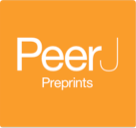A minimal model for explaining the higher ATP production in the Warburg effect
- Published
- Accepted
- Subject Areas
- Bioinformatics, Computational Biology
- Keywords
- Molar yield, Flux-Balance Analysis, ATP-producing pathway, Respiratory pathway, Elementary-modes analysis, Warburg effect, Respirofermentation
- Copyright
- © 2015 Schuster et al.
- Licence
- This is an open access article distributed under the terms of the Creative Commons Attribution License, which permits unrestricted use, distribution, reproduction and adaptation in any medium and for any purpose provided that it is properly attributed. For attribution, the original author(s), title, publication source (PeerJ PrePrints) and either DOI or URL of the article must be cited.
- Cite this article
- 2015. A minimal model for explaining the higher ATP production in the Warburg effect. PeerJ PrePrints 3:e1309v1 https://doi.org/10.7287/peerj.preprints.1309v1
Abstract
For producing ATP, tumor cells rely on glycolysis leading to lactate to about the same extent as on respiration. Thus, they use a higher fraction of glycolysis than the corresponding healthy cells. This is known as the Warburg effect (named after German biochemist Otto Warburg) and also applies to striated muscle cells, activated lymphocytes and microglia, endothelial cells and several other cell types. This effect is paradoxical at first sight because the ATP yield of glycolysis is much lower than that of respiration. Although a straightforward explanation is that glycolysis allows a higher ATP production rate, the question arises why the cell does not re-allocate protein to the high-yield pathway of respiration. We tackle this question by a minimal model only including three combined reactions. We consider the case where the cell can allocate protein on several enzymes in a varying distribution and model this by a linear programming problem in which not only the rates but also the maximal velocities are variable. Depending on side conditions and on protein costs, this leads to pure respiration, pure glycolysis, and respirofermentation as a mixed flux distribution.
Author Comment
This work has been presented at the German Conference on Bioinformatics 2015.

